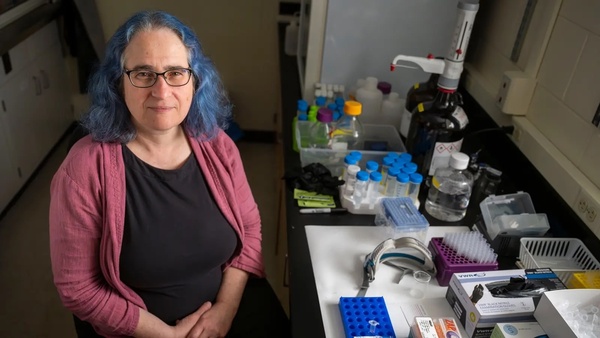
Marya Lieberman decided to let the local community’s needs drive her scientific process. She found herself out of the lab and on the front lines of the opioid epidemic.
Your friendly neighborhood analytical chemist: If there is such a thing, Marya Lieberman embodies it. The 28-year veteran of Notre Dame’s Department of Chemistry and Biochemistry faculty invariably appears with a broad smile and a hair color that seems to emanate from her effervescent personality—sometimes heliotrope purple, sometimes neon blue.
You’ll spot Lieberman not just in the corridors of Stepan Chemistry Hall, where she leads a lab bustling with graduate students, but also around the city of South Bend, where she maintains an extensive list of community partners and field testing sites.
Her work revolves, in fact, around the idea of getting both yourself and your chemistry out of the lab.
“We use lab-based techniques to analyze samples we collect in the field,” she said, “but our real specialty is in designing chemical tests that can occur in the community, where they can lead to a bigger and more immediate impact.”
Anyone who has watched a strip of pH paper change colors in a glass of lemon juice has a sense of what a chemical test outside the lab might look like. Like a pH strip, Lieberman’s designs are lightweight, low-cost, and simple to use—not as a matter of convenience but rather to enable a kind of “citizen science,” where members of the public participate in gathering data.
Read the full article in a Notre Dame Stories feature.